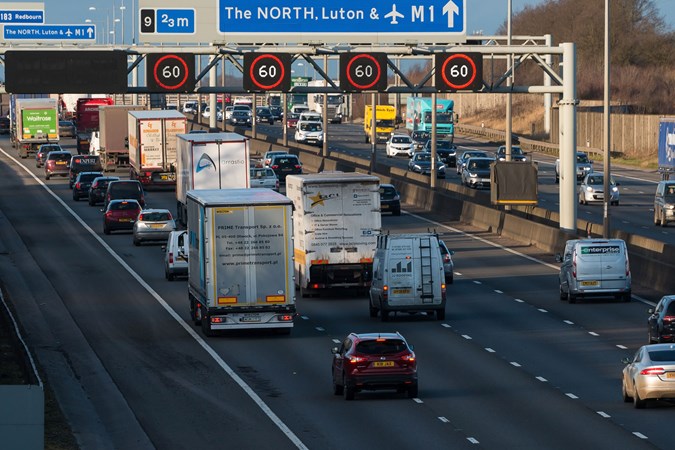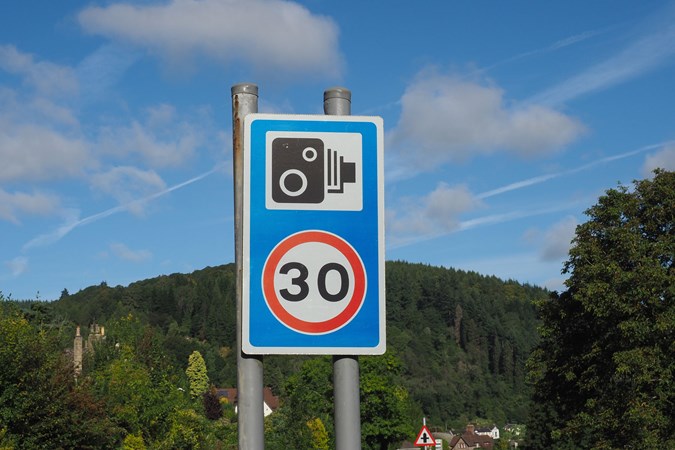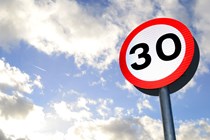Speed limits are one of the most basic rules of the road, but they’re not always as simple as they seem. With different limits for different roads, changes to urban speed zones, and the ever-present risk of speed cameras and fines, it’s worth knowing exactly what’s legal – and why those limits exist in the first place. Here’s everything you need to know about UK speed limits.
What are speed limits?
The limits set the maximum speed you’re legally allowed to drive on a given road, designed to keep traffic flowing safely and efficiently. They vary depending on the type of road and vehicle, and while some feel too slow and others too fast, they’re there for a reason. Stick to them, and you’ll avoid fines, penalty points, and potential bans. Ignore them, and you risk more than just a speeding ticket.
But speed limits aren’t just about penalties — they exist to keep everyone on the road safe. Lower limits in built-up areas reduce the risk to pedestrians and cyclists, while higher limits on motorways help traffic move smoothly. They also play a role in cutting fuel consumption and emissions, meaning they’re as much about efficiency as they are about safety.
How are speed limits set?
Speed limits aren’t set on a whim – they’re carefully determined based on the type of road, conditions, and safety factors. For instance, narrow, winding country lanes will have lower limits than wide, straight motorways. Local authorities also consider traffic levels, accident statistics, and environmental factors like noise and fuel efficiency. Sometimes, limits can be adjusted for weather conditions or special events.
Speed limits by road type
Now, let’s break down the specific speed limit requirements for each type of road.
Motorways
Motorways have the highest speed limits in the UK, with cars and motorcycles allowed to hit 70mph. That applies to dual-carriageway motorways and those with three or more lanes. If you tow a trailer or drive a lorry over 7.5 tonnes, you’re capped at 60mph. Vans and pickups under 7.5 tonnes can also use the 70mph limit, but larger or heavier models may be restricted to 60mph.

But don’t assume 70 is always the limit — smart motorways can drop speeds via overhead signs, especially in heavy traffic or poor weather. If you’re unsure where your vehicle stands, we’ve covered van and pickup speed limits in more detail.
Dual carriageways
As mentioned above, motorways aren’t the only roads where you’ll see a 70mph limit — dual-carriageways follow the same rules for cars and motorcycles. But if you’re towing a trailer or behind the wheel of a lorry over 7.5 tonnes, you’re restricted to 60mph. That said, not all dual carriageways are created equal — some sections have lower limits, especially near junctions or built-up areas, so always keep an eye on the signs.
B-roads and minor roads
B-roads and smaller rural roads typically fall under the 60mph national speed limit, but many are signposted with lower limits due to sharp corners, poor visibility, or residential areas. Some country roads may feel like they should be faster, but hazards like farm traffic, cyclists, and pedestrians mean caution is needed.
Built-up areas
In built-up areas, the default limit is 30mph, though many towns and cities are introducing 20mph zones — especially near schools, residential streets, and high-footfall areas. These lower limits are in place to improve safety for pedestrians and cyclists.
Restricted zones and variable speed limits
Some areas have variable speed limits based on real-time conditions. This includes smart motorways, where the limit can be lowered using electronic signs, and urban built-up areas with congestion-reducing schemes. Always keep an eye out for signage, as exceeding a temporary limit carries the same penalties as breaking a permanent one.
Will you get points for speeding?
Yes — get caught speeding, and you’re likely to end up with penalty points on your licence. The minimum is three points and a £100 fine, but the faster you go, the worse it gets. Serious offences can land you six points or more, a hefty fine, or even a driving ban. In some cases, you might be offered a speed awareness course instead of points — but that’s only if you’re not way over the limit. Keep racking up points, and you could be off the road before you know it.

Of course, not everyone speeds on purpose. You might momentarily lose focus — which is where a radar detector can come in handy, helping you stay aware of your speed and avoid potential fines.
A radar detector can help you stay aware of speed limits


Pros
- Keeps you aware of speed cameras and hazards without causing distractions
- Easy to use and no subscription required
Cons
- Magentic mount for the device isn't included
FAQs
-
What is a national speed limit?
There isn't a one-size-fits-all national speed limit in the UK. Speed limits differ depending on the type of road and vehicle, and in some cases, even the country. For example, heavy goods vehicles (HGVs) face stricter limits — just 40mph on single carriageways in Scotland, while in England and Wales, they can travel at 50mph on the same roads. The highest speed limit in the UK is 70mph, which applies to cars, motorcycles, car-derived vans, and dual-purpose vehicles on motorways and dual carriageways. On single carriageways, the limit drops to 60mph for the same vehicles.
-
How do smart motorways affect speed limits?
Smart motorways use technology to manage traffic flow and adjust speed limits in real-time based on conditions. Speed limits on smart motorways can change dynamically using overhead signs, particularly during congestion, accidents, or bad weather. For example, if traffic is moving slowly, the limit might drop to help prevent further delays and accidents. Similarly, if there’s a clear stretch of road, the limit might temporarily rise to keep things flowing smoothly.
-
Are speed limits the same for all types of vehicles?
No, speed limits vary depending on the vehicle. For cars and motorcycles, the limit is 70 mph on motorways and dual carriageways, 60 mph on single carriageways, and 30 mph in built-up areas. Vans and light goods vehicles (LGVs) have a 60 mph limit on dual carriageways and 50 mph on single carriageways. For heavy goods vehicles (HGVs), the limit is 60 mph on motorways and dual carriageways, and 50 mph on single carriageways. Always watch for road signs, as speed limits may be lower in school zones or construction areas.
-
How much over the speed limit can you go?
Legally? Not at all. The speed limit is the maximum, not a target you can stretch. That said, most police forces in the UK follow the ‘10% + 2mph’ guideline before issuing fines — so in a 30mph zone, you might not get pulled up unless you're doing 35mph. But it’s not a free pass; enforcement varies, and speed cameras don’t always stick to this rule. Play it safe, stick to the limit, and avoid the risk of points, fines, or worse.
Just so you know, we may receive a commission or other compensation from the links on this website - read why you should trust us.








